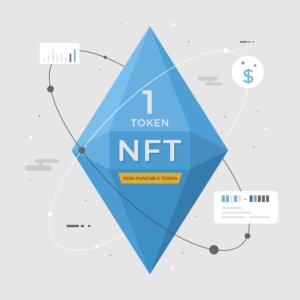The 1031 Exchange is a powerful tool in real estate investing. It allows investors to defer capital gains taxes when they sell a property and reinvest the proceeds into a similar property. Named after Section 1031 of the U.S. Internal Revenue Code, this exchange offers a significant tax advantage by enabling investors to build wealth and grow their portfolios without immediately incurring a hefty tax bill.
Understanding the 1031 Exchange is crucial for real estate investors to maximize tax benefits and strategically plan property transactions. This article aims to provide a comprehensive overview of the 1031 Exchange, including how it works, its key benefits, and potential limitations.
By gaining a clear understanding of this tax-deferred strategy, investors can make informed decisions that align with their long-term financial goals and optimize their real estate investments.
Understanding the Basics of a 1031 Exchange
A 1031 Exchange, as defined by the U.S. Internal Revenue Service (IRS) code, allows real estate investors to defer capital gains taxes when they sell an investment property and reinvest the proceeds into another similar, or “like-kind,” property.
This tax-deferral strategy is designed to encourage continued investment in real estate by enabling investors to roll over their gains into new properties without immediately incurring taxes on those gains.
History and Purpose
The 1031 Exchange has its roots in the early 20th century, with the modern version codified in the IRS tax code in 1954. The primary purpose of the 1031 Exchange is to stimulate economic activity and encourage the continuous reinvestment of capital within the real estate market.
By deferring taxes, investors are more likely to upgrade and diversify their property portfolios, which in turn supports the real estate industry and the broader economy.
How It Works
A 1031 Exchange involves the sale of an investment property and the subsequent purchase of another like-kind property. The key benefit of this process is the deferral of capital gains taxes that would otherwise be due upon the sale of the original property.
To qualify for the tax deferral, the investor must adhere to specific rules, including identifying a replacement property within 45 days of selling the original property and completing the purchase of the replacement property within 180 days. The replacement property must be of equal or greater value than the one sold, and both properties must be held for investment or business purposes, not personal use.
Eligibility Requirements
Not all properties qualify for a 1031 Exchange. To be eligible, both the relinquished and replacement properties must be held for investment or productive use in a trade or business. This means primary residences, vacation homes, and properties held for sale (like inventory) do not qualify.
The properties must be of like-kind, meaning they must be of the same nature, character, or class, though they do not need to be identical. For example, an apartment building can be exchanged for a commercial property or a piece of vacant land.
Types of 1031 Exchanges
Simultaneous Exchange
A simultaneous exchange occurs when the sale of the relinquished property and the purchase of the replacement property happen at the same time. This type of exchange was the original form of the 1031 Exchange before more complex variations were developed.
The primary benefit is the immediate deferral of capital gains taxes without the need for holding or intermediary services. However, simultaneous exchanges are logistically challenging, as they require precise timing and coordination between the sale and purchase transactions.
Delayed Exchange
The delayed exchange, also known as a deferred exchange, is the most common type of 1031 Exchange. In this scenario, the sale of the relinquished property occurs first, and the investor then has up to 45 days to identify potential replacement properties.
After identification, the investor has a total of 180 days from the sale of the original property to complete the purchase of the replacement property. A Qualified Intermediary (QI) is essential in a delayed exchange, as they hold the sale proceeds during the transaction to ensure the investor does not receive them directly, which would invalidate the tax deferral.
Reverse Exchange
A reverse exchange involves purchasing the replacement property before selling the original property. This type of exchange can be advantageous in competitive markets where securing the desired replacement property might be challenging after selling the original one.
However, reverse exchanges are more complex and costly, often requiring the use of a Qualified Intermediary to temporarily hold the title of one of the properties. The investor still needs to adhere to the 45-day identification period and the 180-day closing period to qualify for the tax deferral.
Improvement (Construction) Exchange:
An improvement or construction exchange allows investors to use the exchange funds to enhance or improve the replacement property. In this scenario, the investor can purchase a property that may not meet the value requirement of the relinquished property and then use the remaining exchange funds to make improvements.
The key to this exchange is that the improvements must be completed within the 180-day period, and the total value of the replacement property (including improvements) must meet or exceed the value of the relinquished property. This type of exchange is particularly beneficial for investors looking to customize a property to better suit their investment needs.
These different types of 1031 Exchanges offer real estate investors the flexibility to defer taxes while pursuing various investment strategies, from upgrading properties to acquiring new ones in a competitive market.
The Process & Timeline of a 1031 Exchange
Step-By-Step Process
- Identification of a Qualified Intermediary (QI): The first step in a 1031 Exchange is selecting a Qualified Intermediary (QI), a crucial third-party entity that facilitates the exchange process. The QI holds the proceeds from the sale of the relinquished property and ensures that the investor does not directly handle the funds, which could disqualify the exchange from tax deferral.
- Sale of the Relinquished Property: Once the QI is in place, the investor sells the relinquished property. The proceeds from this sale are transferred to the QI, which holds them in escrow until the investor is ready to purchase the replacement property. The sale must be completed before the investor can identify potential replacement properties.
- Identification of Replacement Property: After selling the relinquished property, the investor has 45 days to identify one or more potential replacement properties. This is known as the 45-day identification rule. The identification must be in writing, signed by the investor, and delivered to the QI. The investor can identify up to three properties, regardless of their value, or more than three properties if their combined value does not exceed 200% of the relinquished property’s value.
- Closing on the Replacement Property: The investor must complete the purchase of the identified replacement property within 180 days of the sale of the relinquished property. This is referred to as the 180-day rule. The QI transfers the funds held in escrow to the seller of the replacement property to finalize the exchange. The 180-day period includes the 45-day identification period, meaning the investor has a total of 180 days to both identify and close on the replacement property.
Important Deadlines
- 45-Day Identification Period: The investor has 45 days from the sale of the relinquished property to identify potential replacement properties.
- 180-Day Closing Period: The investor must close on the replacement property within 180 days of the sale of the relinquished property.
Role of the Qualified Intermediary
The Qualified Intermediary (QI) plays an essential role in the 1031 Exchange process. The QI is responsible for holding the proceeds from the sale of the relinquished property and using these funds to acquire the replacement property on behalf of the investor.
The QI ensures compliance with IRS regulations, preventing the investor from taking constructive receipt of the funds, which would disqualify the exchange. Without a QI, a 1031 Exchange cannot proceed.
Tax Benefits of a 1031 Exchange
Deferral of Capital Gains Taxes
One of the most significant tax benefits of a 1031 Exchange is the deferral of capital gains taxes. When an investor sells an investment property and reinvests the proceeds in a like-kind property, they defer paying capital gains taxes on the profit from the sale. This deferral allows the investor to reinvest the total amount of the proceeds rather than losing a portion to taxes, thereby increasing their purchasing power.
Tax-Free Growth Potential
By deferring capital gains taxes, a 1031 Exchange allows investors to compound their wealth over time. The money that would have been paid in taxes remains invested, potentially generating additional returns. Over time, this tax-free growth can lead to significant wealth accumulation, especially if the investor continues to defer taxes by engaging in multiple 1031 Exchanges throughout their investment career.
Potential for Estate Planning
A 1031 Exchange can also be an effective estate planning tool. If an investor holds a property acquired through a 1031 Exchange until their death, their heirs receive the property with a stepped-up basis.
This means that the property is valued at its fair market value at the time of the investor’s death, potentially eliminating capital gains taxes altogether. This strategy allows investors to pass on their real estate investments to their heirs with minimal tax liability.
Avoiding Depreciation Recapture
Depreciation recapture is a tax on the depreciation deductions claimed by the investor over the years of owning the property. In a 1031 Exchange, investors can defer not only capital gains taxes but also depreciation recapture taxes. This deferral is beneficial because depreciation recapture is taxed at a higher rate than capital gains, allowing investors to avoid or postpone this tax burden.
Risks and Limitations of a 1031 Exchange
Strict Timing Requirements
The 1031 Exchange process is governed by strict deadlines. The 45-day identification period and the 180-day closing period are non-negotiable. Missing these deadlines can disqualify the exchange, resulting in immediate tax liabilities. The tight timelines require careful planning and coordination, making it essential for investors to act quickly and decisively.
Like-Kind Property Requirement
The “like-kind” requirement is a limitation of the 1031 Exchange. The properties involved must be of the same nature or character, though not necessarily the same quality or grade. For example, you can exchange a commercial building for an apartment complex but not for stocks or bonds.
This limitation restricts the types of investments that can be made and requires investors to carefully select replacement properties that meet IRS criteria.
Complexity and Costs
A 1031 Exchange is a complex transaction that involves various legal, financial, and logistical steps. Hiring a Qualified Intermediary, legal advisors, and other professionals adds to the administrative burden and costs. These expenses can reduce the overall financial benefit of the exchange, especially if the value of the properties involved is not significantly high.
Potential Pitfalls
Common pitfalls in a 1031 Exchange include misidentifying replacement properties, failing to meet IRS deadlines, and mishandling the exchange process. For example, if an investor fails to properly identify replacement properties within the 45-day window, the exchange may be disqualified. Working with inexperienced intermediaries or not fully understanding the IRS guidelines can lead to costly mistakes.
Strategic Uses of a 1031 Exchange
Portfolio Diversification
Investors can use 1031 Exchanges to diversify their real estate portfolios. By exchanging one property for multiple properties or different types of properties (e.g., trading a commercial property for residential units), investors can spread risk and tap into various market segments. This diversification strategy can enhance long-term returns and reduce exposure to market fluctuations.
Upgrade to Higher-Value Properties
A common strategy with 1031 Exchanges is to “trade up” to more valuable or income-generating properties. Investors can leverage their current assets to acquire larger or more lucrative properties, increasing their rental income and potential for capital appreciation. This approach allows investors to scale their portfolios without the immediate tax burden that would typically accompany the sale of a property.
Geographical Relocation
1031 Exchanges provide a way for investors to relocate their investments to more favorable markets. Whether moving assets from a declining market to a booming one or shifting from one region to another for better growth prospects, this strategy allows investors to adjust their portfolios in response to market conditions without triggering capital gains taxes.
Estate Planning Considerations
Incorporating 1031 Exchanges into an estate planning strategy can provide significant tax benefits for heirs. By continuously deferring capital gains taxes through successive exchanges, investors can build substantial wealth that can be passed on to their heirs.
Upon the investor’s death, the properties can receive a stepped-up basis, potentially eliminating the capital gains tax burden and allowing heirs to inherit properties with a clean tax slate.
Alternatives to a 1031 Exchange
Opportunity Zone Investments
Investing in Opportunity Zones offers a unique way to defer capital gains taxes while also contributing to the economic development of underserved communities. Established by the Tax Cuts and Jobs Act of 2017, Opportunity Zones allow investors to defer taxes on realized capital gains by reinvesting those gains into Qualified Opportunity Funds (QOFs).
If the investment is held for a minimum of 10 years, the investor can potentially eliminate capital gains taxes on the appreciation of the Opportunity Zone investment itself.
Installment Sales
An installment sale is a strategy where the seller finances the sale of the property over time, allowing them to spread the capital gains tax liability over several years. By receiving payments in installments rather than a lump sum, the seller can defer the recognition of capital gains each year, potentially lowering their overall tax burden and providing a steady income stream.
Charitable Remainder Trusts (CRTs)
A Charitable Remainder Trust (CRT) is an irrevocable trust that allows an investor to donate a property while retaining an income stream from the trust for a specified period or for life. The property is sold within the trust, and because the trust is tax-exempt, there are no immediate capital gains taxes.
After the trust term ends, the remaining assets go to a designated charity. This strategy offers both tax deferral and the satisfaction of contributing to a charitable cause.
Direct Sale With Reinvestment
In some cases, it may make sense to sell a property directly and reinvest the proceeds without using a 1031 Exchange. This approach might be preferable if the investor expects to have lower income in the year of sale, allowing them to take advantage of lower tax rates or if they prefer the flexibility of reinvesting in assets other than real estate.
Frequently Asked Questions
Conclusion
A 1031 Exchange is a powerful tool for real estate investors looking to defer capital gains taxes and reinvest in like-kind properties. It offers significant benefits, such as tax deferral, increased growth potential, and strategic estate planning opportunities. However, it requires strict adherence to IRS regulations and deadlines, making it essential to understand the process thoroughly.
When used effectively, a 1031 Exchange can be a cornerstone of a successful real estate investment strategy, allowing investors to grow their portfolios without the immediate tax burden of capital gains.
However, it’s not the only option available. Alternatives like Opportunity Zone investments, installment sales, and Charitable Remainder Trusts can also provide tax advantages depending on the investor’s goals and circumstances.
Given the complexities involved, it’s crucial for investors to seek professional advice when considering a 1031 Exchange or its alternatives. A tax advisor or real estate attorney can help ensure compliance with IRS rules and maximize the financial benefits of these strategies.
 Sections of this topic
Sections of this topic
















